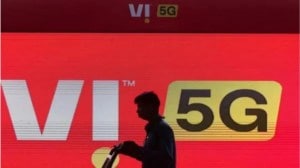Stay updated with the latest - Click here to follow us on Instagram
Harsh weather conditions prove costly for airlines
Heavy rainfall affected flight operations at the Mumbai airport on Tuesday. There was an average delay of 45 minutes in flight departures and there were ten go-arounds for the day.
Heavy rainfall affected flight operations at the Mumbai airport on Tuesday. There was an average delay of 45 minutes in flight departures and there were ten go-arounds for the day. Delays and go-arounds not only inconvenience passengers they are also a financial burden. Every monsoon airlines have to deal with inflated fuel bills roughly 40% of an airlines operating cost because of the go-arounds.
A pilot opts for a go-around before landing when he is unable to make an approach to land at the airport usually in harsh weather conditions when visibility is poor. According to a senior Jet Airways pilot,every go-around at the airport can cost an airline from Rs 20,000 to Rs 60,000 worth of fuel depending on an aircrafts size and type. A typical go-around on a Boeing 737 a narrow body jetliner and a popular choice with domestic carriers at the Mumbai airport costs upwards of Rs 20,000 worth of fuel. In bigger aircraft like the 747,quantity of excess fuel consumed because of a go-around may be much higher, he said.
Tuesdays go-arounds resulted in ten aircraft burning up atleast Rs 20,000 worth of fuel each. Globally,the benchmark figure is $100 per minute or roughly Rs 5,000 in overall costs according to an ICAO study that was conducted five years ago, said Jitender Bhargava,executive director (corporate communications),Air India. Considering that a typical go-around lasts 20 minutes,overall costs for airlines can be alarming. In addition to this,airlines lose out on stipulated pilot hours as they are paid for every extra minute spent in the cockpit.
Pilots and airport officials term such wastage of fuel as a necessary evil. Is there an alternative to this? asked a Jet official. With low visibility it is safer to go-around than to attempt landing, said a safety expert from a private carrier.
The fact that Mumbai airports runways do not have CAT III Instrument Landing System (ILS),that helps an aircraft land in zero visibility conditions and avoid go-arounds,also adds to the problem. However,MIAL officials argue,that the need for CAT III ILS arises only on certain days. Its maintenance cost is also very high.







